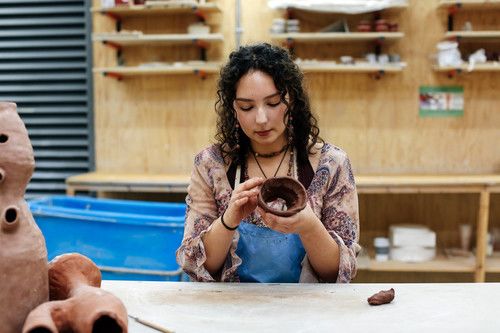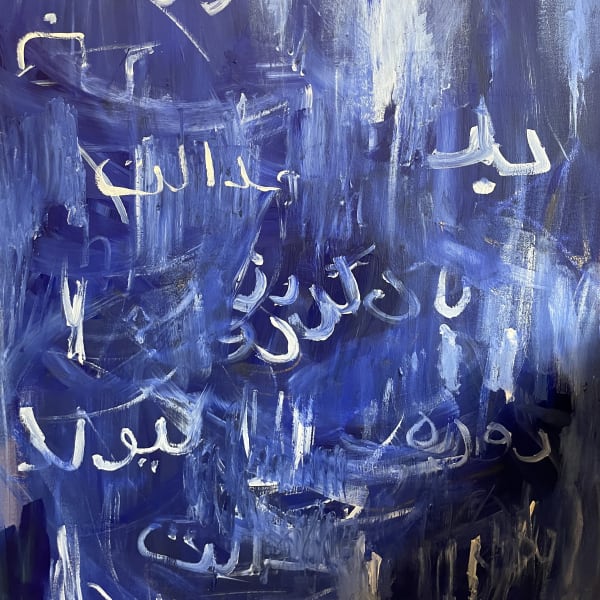
How can art and creativity improve your health and wellbeing?

- Written byMariana Jaureguilorda Beltran
- Published date 01 November 2021

You’ve heard it before. Whether you get creative for enjoyment, professionally or routine, intuitively, we know that creativity is good for us.
There is a perfectly reasonable explanation for this, tapping into that creative energy improves your overall health. Engaging in creative behaviours improves your brain function as well as, mental and physical health. Being in a state of flow boosts our mental state and even slows the heart rate down, making it particularly significant for people who suffer from mental illness, depression or anxiety.
With mental health issues affecting nearly half of the population at some point in their lives, we spoke to artists and art therapists to ask how art and creativity can improve your health and wellbeing.
Why creativity is important for your mental health?
“Art-making can not only help us make sense of living but potentially make living healthier and more comforting. This is something we all need and crave,” said R.M. Sánchez-Camus (Marcelo), art and wellbeing tutor and founder of Applied Live Art Studio.
Marcelo believes we can use creativity as a tool to design a better external and internal world. Our mental health is not about being happy all the time, it is about being resilient and recovering from the peaks and valleys that are inevitable in life and applying the same creative strategies and practices you may apply to your work to your mind.
Read why creativity is important for your mental health.
“Art-making can help us tap into our emotions and make sense of them,” said Michelle Dixon, Art Therapist.
Michelle Dixon is an art therapist working in a Women and Children’s hospital in Doha and explained the benefits of art therapy sessions for children and families who are ill or have gone through trauma.“My sessions help them have a positive experience at the hospital. Art can provide a vehicle for self-expression, it can normalise their hospital stay and is something they can do as a family,” she said.

What is art therapy?
“In an art therapy session, using the art materials provided enables a person to directly express how they are feeling” explained Louise Higgs, UAL Art Psychotherapist. “The art materials provide a vehicle for expression, and it is this non-verbal creative process that also allows for any unconscious material to materialise within their artwork. The hidden now overt, the person can then be made aware by the art therapist who supports both them and their process. Whatever feelings or emotions are experienced within a session, can be safely worked through with the art therapist supporting them alongside."
You may be wondering, what the difference is between art therapy and art classes? Art classes focus on the creative process for the artist, who the audience may be, the final artwork, and also potentially learning different creative techniques. Whereas in art therapy, you are reflecting upon what materialises within the artwork for someone during their sessions, being made aware by the art therapist to work through unprocessed feelings and emotions together. This provides a step towards healing when a 'shift' occurs by encouraging the person to speak about their difficult and potentially 'messy' feelings while being safely contained by the art therapist within their art therapy sessions.
Louise offers art therapy sessions for all UAL students with fellow art therapist Lisa Gibson, both registered with the Health and Care Professions Council (HCPC). Louise stated “Whether you are feeling isolated, happy, sad, or angry, art therapy allows you to explore your self-expression in a gradual and non-threatening way. We can work with the individual and sensitively ‘draw out’ what their artwork means for them and as the sessions progress, they will have a better understanding of their needs”.

Carving out time for creativity
By now, we know taking time out to be creative can be beneficial for your mental health condition and general wellbeing.
Feeling creative isn’t something you can force, so it’s important you recognise that it’s the process of being creative that helps rather than the final product. You don’t need to create a masterpiece to reap the benefits. You can start small and gradually increase your capacity. Try and carve out some time each week for creative activities, whether that is colouring, journaling, or learning a new skill – find what works for you.
Michelle Dixon explained that adults are more concerned with judgement when it comes to doing art and that is important to take it less seriously. “Children are intrinsically creative, fearless, and open to newness. Adults are more aware of being judged when doing art, so giving yourself permission to relax and enjoy the creative process is key,” she said.
When it comes to children, art and creativity are key for their development. It cultivates wellbeing and helps young learners create connections between subjects. Read more on the importance of art and creativity in a child's development.

Mental health benefits of creative activities
So how can taking some time to be creative improve your overall wellbeing? Let’s look at some health benefits to creativity:
1# Makes you happier
You know that feeling when you get into something and are completely absorbed in it? That’s called flow. That flow reduced anxiety, boosts your mood and even slows down your heart rate.
Art in any shape or form – whether while creating or observing, reduces the stress hormone called cortisol. It also boots the release of the feel-good hormones called endorphin, which can tackle anxiety and depression.
“I have seen first-hand the emotional and physical benefits of creative practice in people. I have watched patients in a hospice who cannot find relief from any number of painkillers sit at a table and go into flow and for a brief period of art making forget about their pain,” said Marcelo
People who experience flow, report higher levels of creativity, productivity, and happiness.
2# Reduces dementia
Being creative is also an effective treatment for patients with dementia. Creative engagement can help people with dementia tap back into their personalities and sharpen their senses.
Art therapy can provide non-verbal communication methods such as painting, music and drawing to those who struggle to communicate verbally. Furthermore, group therapy sessions help against isolation and lack of life perspective and hope.
3# Improves your mental health
In average, we have about 60,000 thoughts in a day. A creative activity such as illustrating or pottery making will release dopamine - nature's anti-depressant - and help focus your mind.
Getting creative reduces anxiety, depression and stress. Studies have also shown that it can help you process trauma. A creative process can help you both process and express emotions in a productive way.
“I like to use slime making with my students/patients to encourage them to process difficult emotions. It can be a great metaphor for change and can be a great bonding experience with others,” explained Michelle Dixon.
Creative Writing tutor and author, Elise Valmorbida, believes in the power of art and creative writing. “It took me a while to realise that creative writing was having a profound and positive effect on my life. This can be said of other creative practices, if you give time to them, there’s something uniquely powerful about making sense of the chaos of experience through words, expressing and refining thought, developing ideas and communicating effectively with others,” she said.
So, there you have it, tapping into your creativity doesn’t only make you happier and smarter but also reduces anxiety, loneliness, depression and dementia. If you’d like to kickstart your creative process, check out UAL Short Courses offer, from beginners to advanced – there's a course for everyone.
